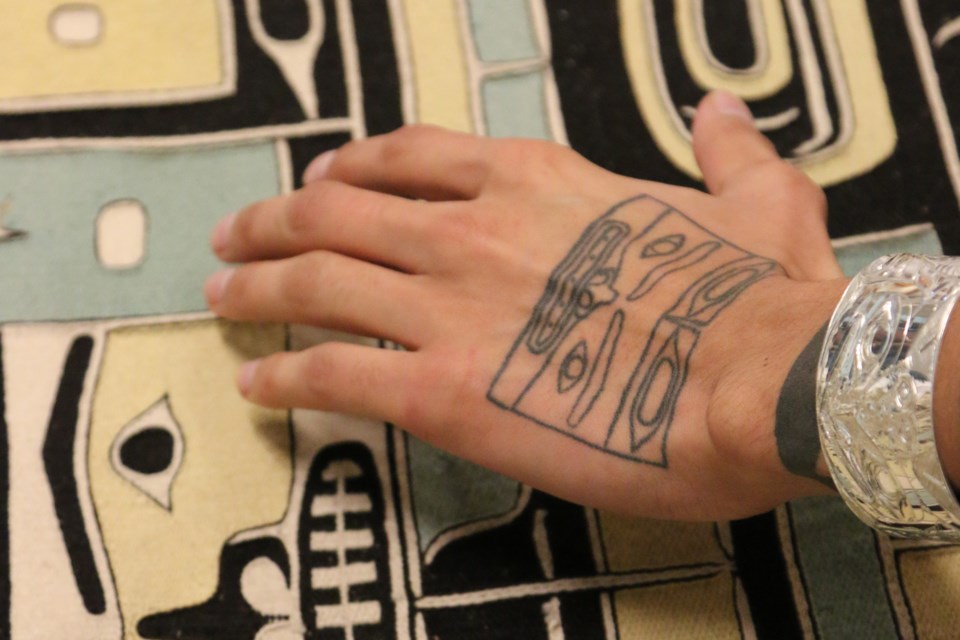DETAILS
Virtual talk with guest curator Dion Kaszas
Presentation on Body Language: Reawakening Cultural Tattooing of the Northwest
2 p.m. on Sat., Feb. 13
Attendance is free though donations are appreciated
Visit eventbrite.ca/e/body-language-reawakening-cultural-tattooing-of-the-northwest-virtual-talk-tickets-138468833007 to register.
Call 780-459-1528 or visit museeheritage.ca for more information.
It's about changing the lens, Dion Kaszas says, responding to why exhibitions like the current one on display at the Musée Héritage Museum are so important to him.
"In past times, exhibitions about Indigenous peoples and our tattooing practices, or practices of embodying our culture, have been through a Western colonial lens," he explained.
Kaszas the guest curator of Body Language: Reawakening Cultural Tattooing of the Northwest, will be presenting a series of virtual talks as part of the museum's ongoing programming in support of the exhibit. The first event takes place on Saturday.
"For me, I've really been exploring over the past years since that time in 2018 the idea of how we claim or how we talk about our tattooing practices as tattoo medicine. I'll probably be really exploring some of the insights I've been gaining about the healing aspects of our tattooing practices."
The Hungarian, Métis and Nlaka’pamux tattoo artist, painter and cultural tattoo practitioner has been a huge part of the Indigenous tattoo revival over the last decade. Working with the Bill Reid Gallery of Northwest Coast Art to develop the show allowed him the chance to not only bring cultural tattoos to galleries and museums across the country but it also served to highlight the five participating artists themselves.
He insisted that they all have a voice in how the exhibit was planned and presented.
"We gathered all of the artists together in Whistler, flew them all in, and we met over a weekend, to ask the questions: what is appropriate to share? What isn't appropriate to share? What do we want to highlight? How do we want to communicate this project?"
Those other artists were Nakkita Trimble (Nisga’a), Nahaan (Tlingit), Corey Bulpitt (Haida) and Dean Hunt (Heiltsuk).
"I called them – the artists themselves – a curatorial steering committee for the exhibition. For me, those were the key points that made this exhibition distinctive. The importance of it was having the artists' voices present, not just represented, but actually present in the planning, and then second, that it was our voices being heard: our embodiment of the practice."
Kaszas said that he would have much preferred to do the presentation in person.
"It's challenging just because so much of our work is about traveling and visiting with people. It is challenging to not be there to talk with people: you get such a better sense of who's in the crowd, and you're able to speak to them in a more full way," Kaszas continued. "I'm excited to be able to have the opportunity to do it. In all honesty, it does open up access to people who aren't there. There is that benefit of doing the electronic media presentation."
The second talk in March will feature two of Kaszas's former students: tattoo artists Keith Calihoo and Heather Kiskihkoman.
Museum curator Joanne White added that the third presentation will feature Dawn Marie Marchand, the first Indigenous artist in residence for the city of Edmonton.
"She's not a tattoo artist, but she is an artist who has who speaks on a lot of Indigenous issues in art. She's going to be talking about cultural appropriation, specifically and then Keith is actually going to come in for part of that third discussion as well, just to tie the tattoo perspective back into that."
The exhibit is still intended to run until May 2
Read more from StAlbertToday.ca



